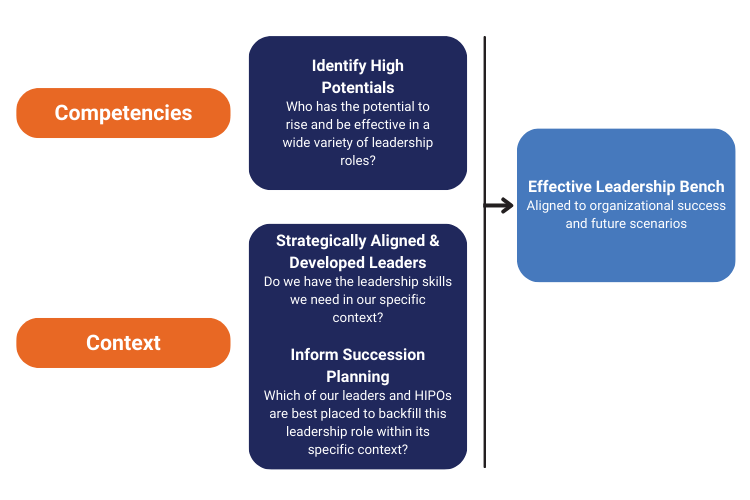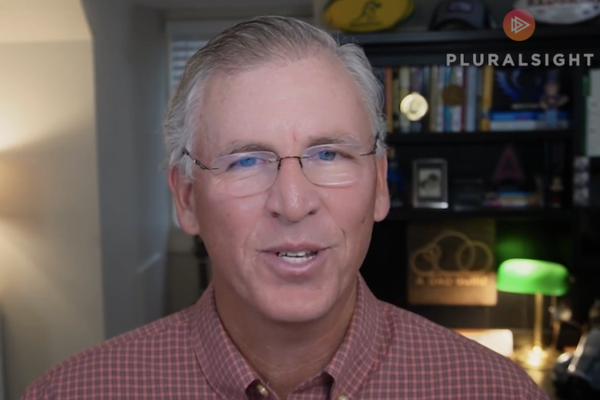Who should lead? And when?
These are two critical questions business leaders and talent professionals are always seeking answers for, but the fact is that despite substantial and increasing investments in succession management and leadership development, most organizations still struggle to build strong leadership benches needed to meet current and future business needs.
Yes, there are perfectly crafted high-potential lists of candidates who could fill a leadership position; however, they often are not created with a look toward the future or an understanding of what the business will need to deliver its vision.
Today’s leadership capabilities and competencies have changed little, but the operating environment and landscape a leader must navigate has changed drastically. This has led to a huge gap and missing link between managing leadership bench strength and where the organization is heading. Shocking recent statistics from Development Dimensions International reveal that only 20 percent of more than 2,000 leading organizations surveyed in 2024 are confident that their leadership bench will be able to lead the organization into the future.
Thus, the question remains: How strong is your organization’s leadership bench? And how do you manage it?
Traditional leadership pipeline management doesn’t work
Having a strong bench allows an organization to immediately fill critical leadership positions with internal talented candidates in order to maintain business performance and drive success. However, organizations’ continuous attempts at using traditional pipeline strategies to manage their leadership bench greatly fail to generate future business leaders capable of managing continuous challenging business contexts.
There are two main reasons for the ineffectiveness of traditional leadership pipeline management:
1. Narrow scope
Typically, the traditional leadership pipeline approach focuses on preparing and aligning a pool of future leaders to specific critical roles, but this approach breaks down in today’s business environment, in which 13 percent of leadership positions have been eliminated in the past three years and 31 percent of leaders are in newly created positions, according to a succession management outlook study I conducted in 2024 among 1,800 organizations. Leadership roles are changing more frequently, and most organizations expect more than 40 percent of their leadership roles to be significantly different within five years.
Thus, managing leadership pipelines by focusing only on a specific leadership role does not work, and a transformative approach is needed to shift toward a leadership portfolio pipeline approach.
2. Traditional role pre-identified competencies development
Focusing on preparing and developing future leaders based on a specific set of competencies and skills associated with the leadership/critical role is a basic leadership development component, but the traditional leadership pipeline approach does not build experiences for leaders to work through different challenges and contexts.
Leadership is more complex today. We can clearly see that rapidly changing roles present new contextual challenges that have significant impact on the capabilities leaders need to be successful. Business context shapes the innate capabilities needed for leader success: Leaders need to know how to handle contextual challenges such as succeeding in volatile, ambiguous environments; leading geographically dispersed teams; transforming high-conflict culture; and delivering rapidly changing products, services or processes. Leader performance improves when a leader’s capabilities and experience are fit to the context and match the particular challenges of a specific role.
That’s why traditional leadership pipeline strategies greatly fail to develop future leaders capable of working through different contexts; the focus should be shifted from role-competencies development to context-experience development.
A solution: the Three Factors Model
To continuously improve leadership bench strength, organizations must shift their practices from a traditional pipeline management approach to a business context management approach. A forward-thinking approach must combine key critical competencies along with the business contexts and challenges that shape the organization’s business performance.
I have developed the following Three Factors Model to ensure better results in managing leadership bench strength.

Phase 1: Context-based planning
In today’s challenging business environment, using context to enhance current approaches will leave organizations better situated to identify and develop targeted, dynamic, agile and precise leadership strategies.
Context-based planning is an effective basis on which to identify leaders by their ability to thrive in certain business contexts (for example, operating with high resource constraints, driving business growth and designing new market entry strategies, and delivering rapidly changing products, services and processes) and match them to the context for which they are best suited. This means looking beyond the tasks and responsibilities of a role to consider it in the broader context of the team, organization and external environment.
Using context-specific profiles to help plan the organization’s leadership bench increases decision accuracy by 4-fold compared with using a general competency model to predict leader success. Thus, integrating the role’s key relevant business contexts with the pre-identified competencies will reveal the most effective leadership benches.

Phase 2: Experience-based development
Maintaining the health and effectiveness of the organization’s leadership bench requires a shift from individual development plans to individual experience plans. Such a shift ensures leaders are strategically developed and aligned with the business contexts, challenges and key business drivers.
Experience-based development is the forward-thinking approach to create organization-fit leaders instead of investing in only role-fit leaders.
Phase 3: Mobility
Depending on an organization’s key contexts to identify and develop leadership benches does not guarantee their competence and maturity. Mobility does.
Your overall leadership bench management approach must be centered on a planned mobility and performance enablement scheme: Organizations must build flexible and agile leadership processes to enable their leaders to take part in cross-departmental assignments and be part of gig projects. For example, 3M is famous for its 15 percent rule, where leaders can take a portion of their time away from their typical daily tasks to work on exciting innovations. Mobilizing is always a key factor to ensure a healthy and effective leadership bench.
The LBS Model, with its three factors of context, experience and mobility, can double the strength of your leadership bench compared with traditional pipeline strategies. It fosters the organization’s competitive advantage by building leaders who are capable of addressing business challenges and future scenarios. The shift toward context-based leadership is a must.
This article was originally published by Chief Learning Officer’s sister publication, Chief Talent Officer.















